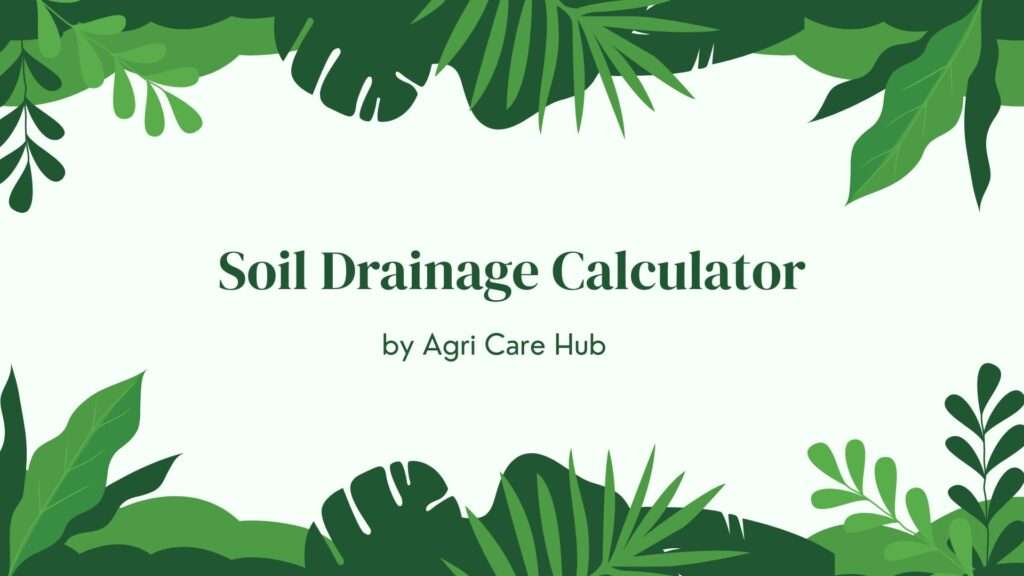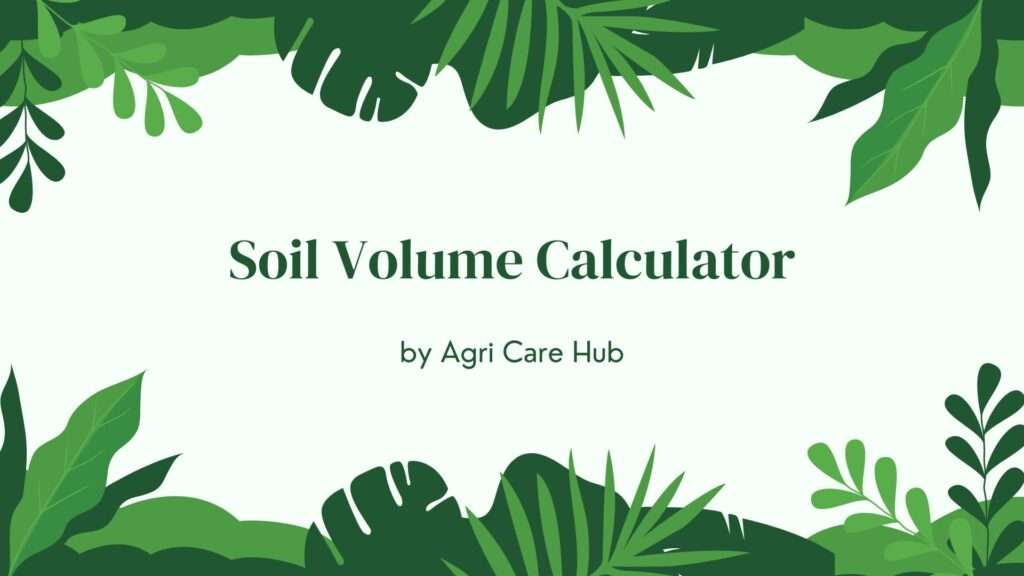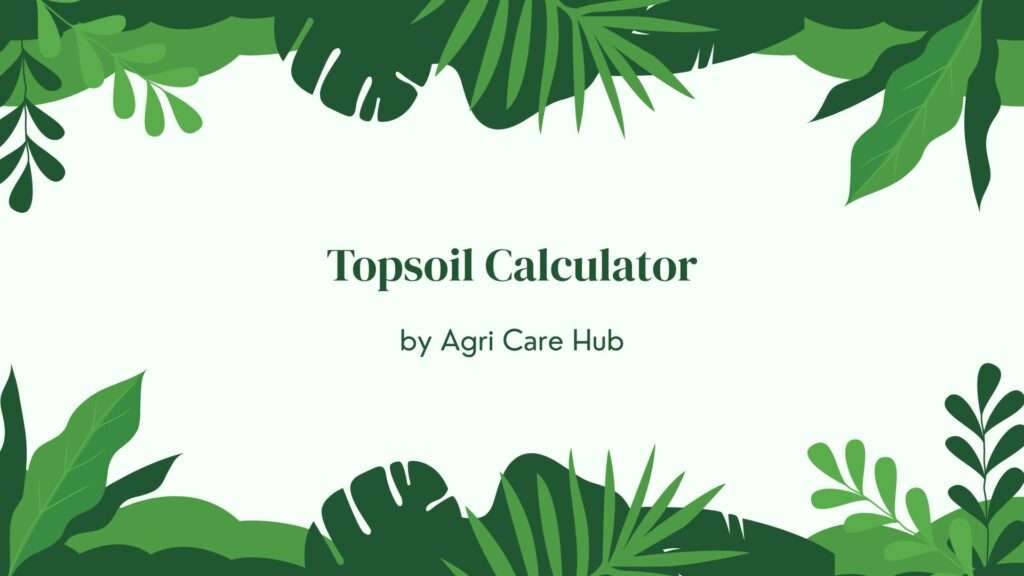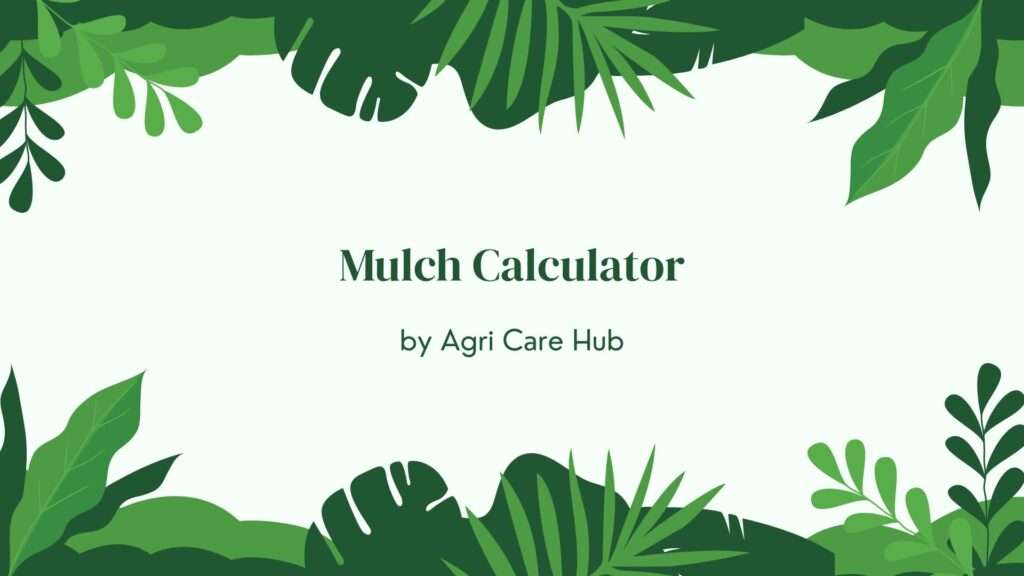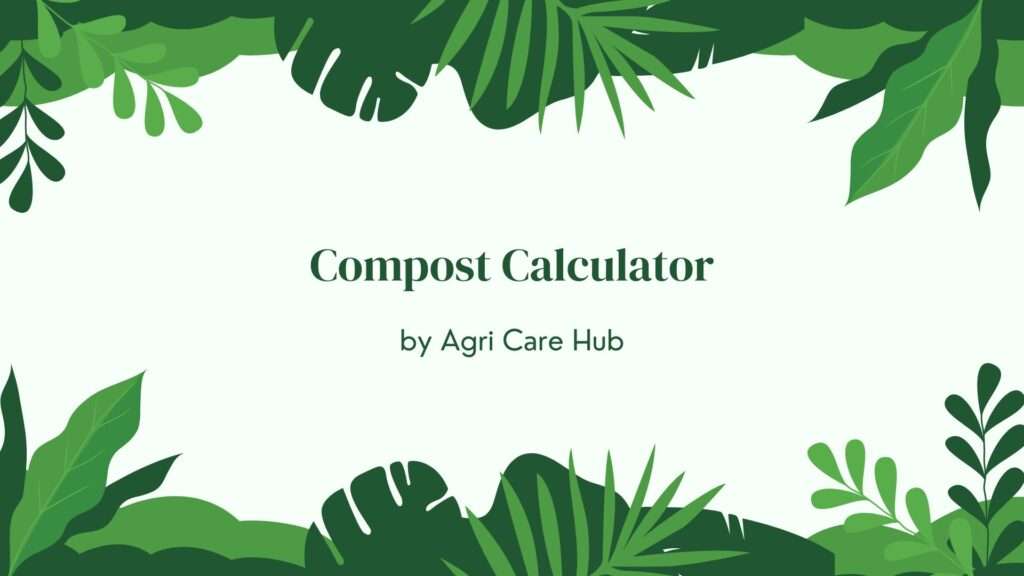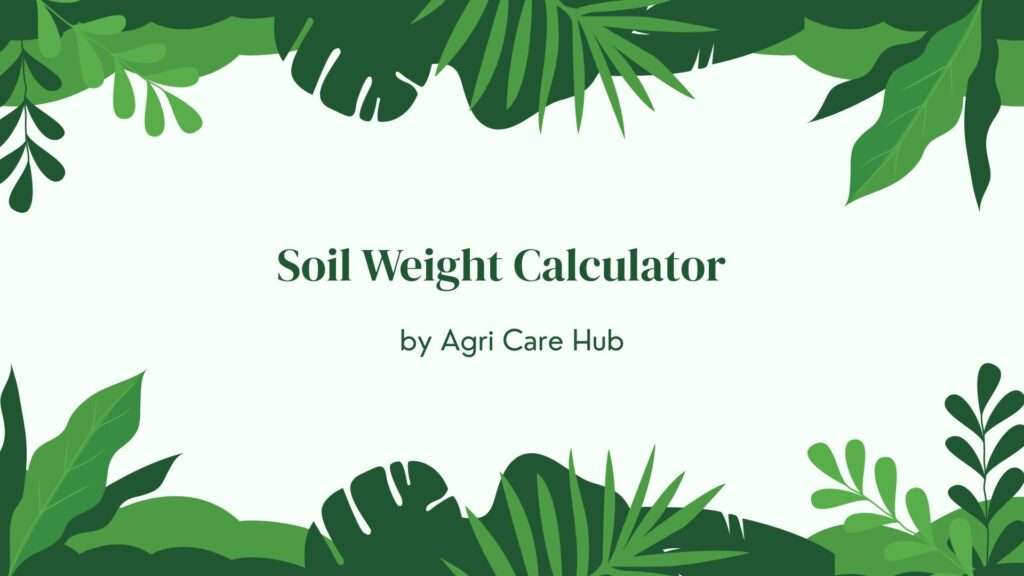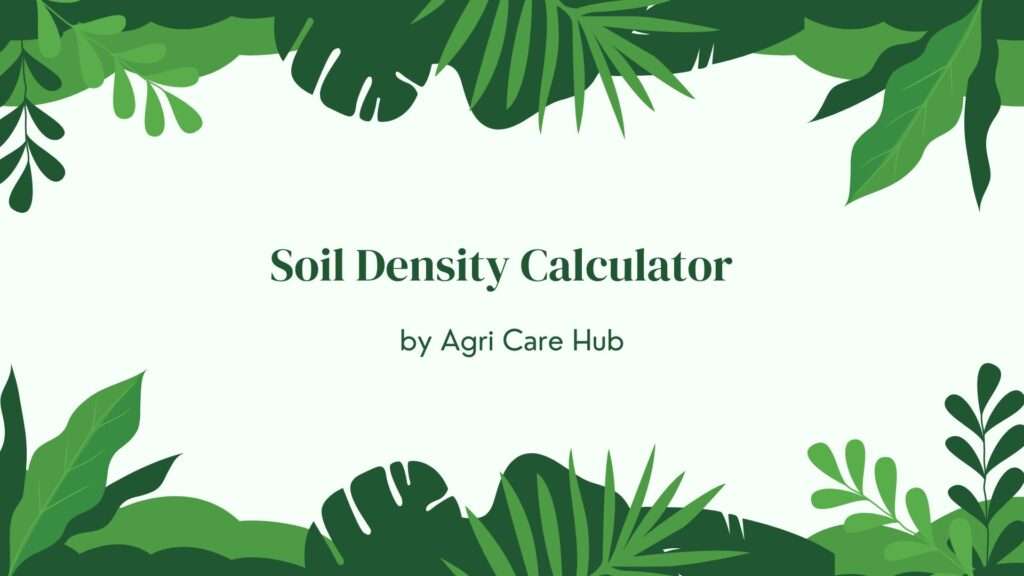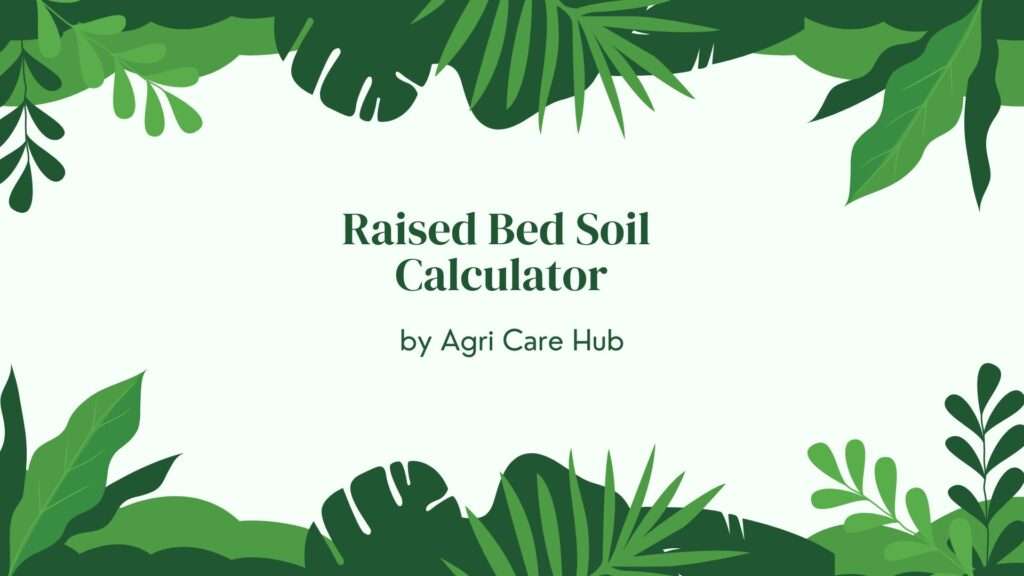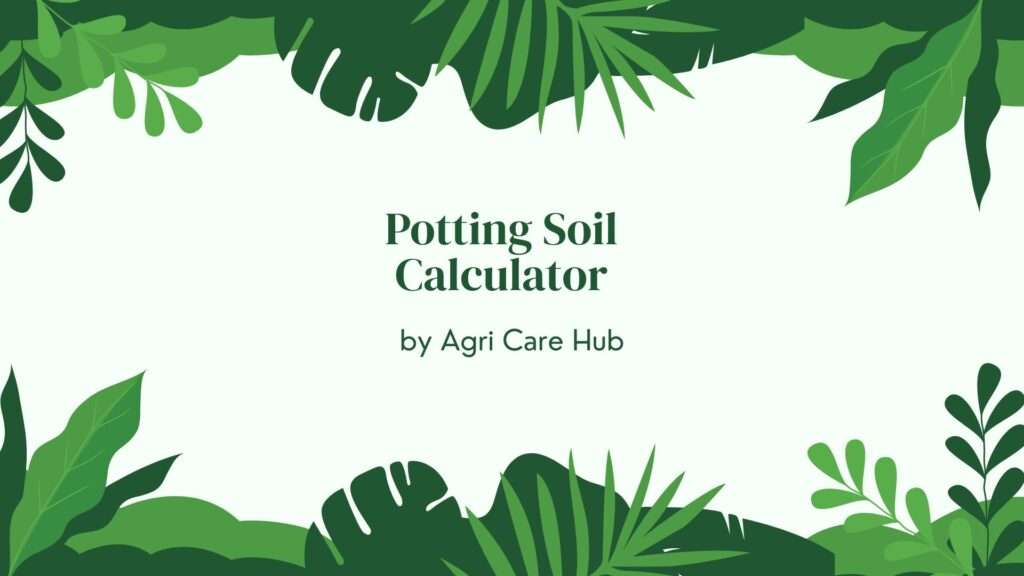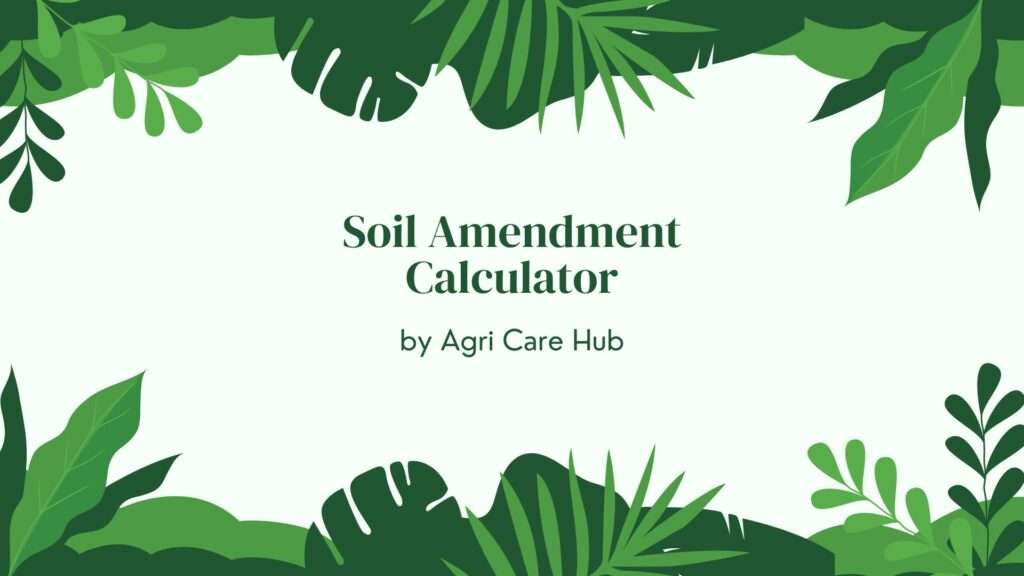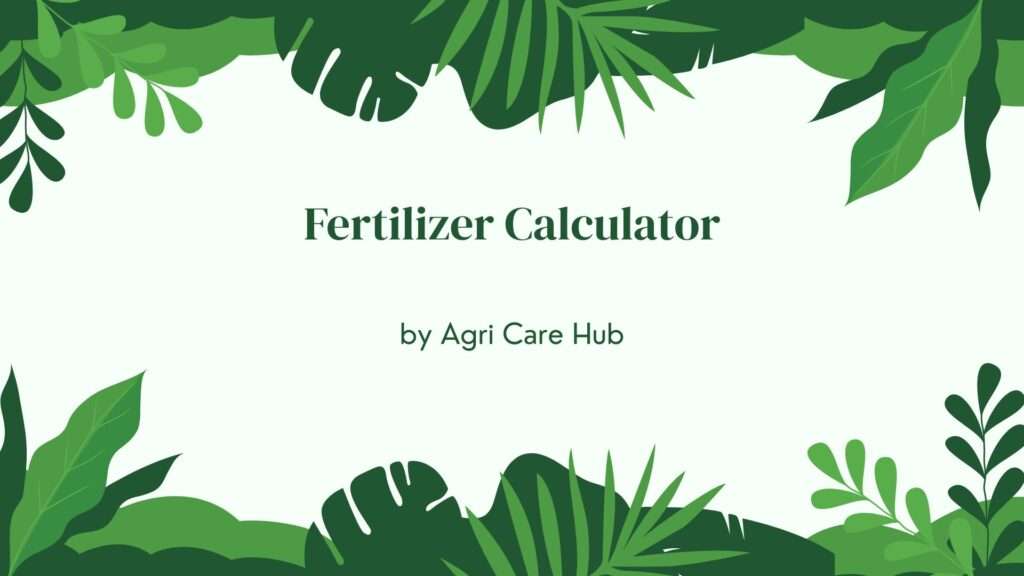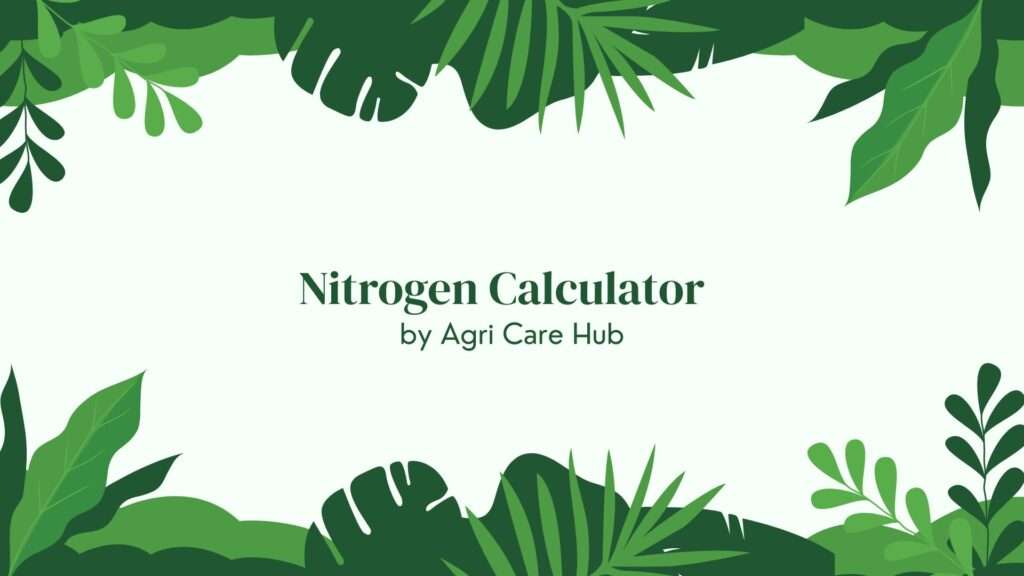Soil Drainage Calculator
About the Soil Drainage Calculator
The Soil Drainage Calculator is a scientifically designed tool to assist farmers and agricultural professionals in assessing soil drainage characteristics and determining management practices for optimal crop growth. By inputting soil type, infiltration rate, field area, slope, and crop type, this tool uses verified soil science formulas to provide accurate drainage recommendations. Proper soil drainage is critical for plant health, preventing waterlogging and ensuring nutrient availability. Developed with insights from Agri Care Hub, it promotes sustainable farming. Learn more about Soil Drainage.
Importance of the Soil Drainage Calculator
Soil drainage significantly impacts agricultural productivity by influencing water availability, root growth, and nutrient uptake. Poor drainage can lead to waterlogging, root rot, and reduced yields, while excessively rapid drainage can cause drought stress and nutrient leaching. The Soil Drainage Calculator addresses these challenges by evaluating soil infiltration rates and field characteristics to provide tailored management recommendations. This tool helps farmers optimize drainage practices, improve crop health, and reduce environmental impacts like runoff and erosion.
By aligning with precision agriculture principles, the calculator supports data-driven decisions, ensuring efficient water management. It uses methodologies from soil science research, such as the Green-Ampt infiltration model, to deliver reliable results. This promotes sustainable farming by minimizing water waste and protecting soil health, contributing to long-term agricultural productivity.
User Guidelines
To use the Soil Drainage Calculator effectively, follow these steps:
- Identify Soil Type: Determine your soil type (sandy, loam, or clay) through a soil test or consultation with an agricultural extension service.
- Measure Infiltration Rate: Conduct a simple infiltration test (e.g., double-ring infiltrometer) to measure the rate at which water enters the soil (mm/hr).
- Input Field Area: Enter the field area in hectares to calculate drainage needs.
- Specify Field Slope: Provide the slope percentage of your field, which affects runoff and drainage.
- Select Crop Type: Choose the crop you are growing, as drainage requirements vary by crop.
- Calculate: Click the "Calculate Soil Drainage" button to receive drainage class and management recommendations.
- Apply Recommendations: Implement suggested practices, such as drainage systems or tillage adjustments, as needed.
Consult a local agronomist to validate recommendations, as regional climate and soil conditions may influence results.
When and Why You Should Use the Soil Drainage Calculator
The Soil Drainage Calculator is ideal during field planning, especially before planting or installing drainage systems. Use it when:
- You observe waterlogging, runoff, or poor crop growth due to drainage issues.
- You have infiltration test data and want to optimize drainage practices.
- You aim to improve crop yield while minimizing environmental impact.
- You are adopting precision agriculture for data-driven soil management.
This tool ensures drainage practices align with scientific principles, preventing issues like waterlogging or erosion. It supports sustainable farming by reducing runoff, which can carry sediments and nutrients into water bodies, and helps comply with environmental regulations.
Purpose of the Soil Drainage Calculator
The primary purpose of the Soil Drainage Calculator is to provide farmers and agricultural professionals with a reliable, science-based tool to assess soil drainage and recommend management practices. By integrating soil type, infiltration rate, and field characteristics, it delivers precise recommendations that enhance crop productivity, improve soil health, and promote sustainable agricultural practices. The tool simplifies complex drainage management, making it accessible to users of all expertise levels.
It also serves as an educational resource, raising awareness about the importance of soil drainage in agriculture and the consequences of poor drainage management. By offering actionable insights, it empowers users to make informed decisions that benefit their crops and the environment.
Scientific Basis of the Soil Drainage Calculator
The Soil Drainage Calculator is grounded in established soil science principles, using the Green-Ampt infiltration model and soil texture classifications to assess drainage. Key factors include:
- Soil Type: Sandy soils have high infiltration rates (20–100 mm/hr), loam soils are moderate (10–20 mm/hr), and clay soils are low (1–10 mm/hr).
- Infiltration Rate: Measured in mm/hr, this indicates how quickly water enters the soil, affecting drainage class.
- Field Slope: Steeper slopes increase runoff, reducing effective drainage.
- Crop Requirements: Crops like rice tolerate poor drainage, while corn requires well-drained soils.
The calculator classifies drainage (e.g., well-drained, moderately drained, poorly drained) based on infiltration rate and soil type, recommending practices like tile drainage or raised beds for poor drainage scenarios.
Benefits of Using the Soil Drainage Calculator
Using the Soil Drainage Calculator offers numerous benefits, including:
- Precision: Accurate drainage assessment based on soil and field data.
- Improved Yields: Optimize drainage to enhance crop growth and productivity.
- Environmental Protection: Reduce runoff and erosion, preserving soil and water quality.
- Cost Efficiency: Avoid unnecessary drainage installations by targeting specific needs.
- Sustainability: Support eco-friendly soil management practices.
By integrating this tool, farmers contribute to sustainable agriculture while achieving better economic outcomes.
How to Interpret Results
The calculator provides a drainage class (e.g., well-drained, moderately drained, poorly drained) and management recommendations. For example, a result of "Poorly Drained, Install Tile Drainage" suggests implementing subsurface drainage systems. If drainage is adequate, no major interventions may be needed. Always consult an agronomist to adjust recommendations for local conditions and crop needs.
Additional Resources
For more information on soil drainage management, visit Agri Care Hub for expert advice and resources. To understand soil drainage concepts, explore Soil Drainage on All Things Nature. Local agricultural extension services and soil testing labs can provide region-specific guidance to complement the calculator’s recommendations.
Understanding Soil Drainage in Agriculture
Soil drainage refers to the rate at which water moves through or out of the soil, influenced by soil texture, structure, and slope. Well-drained soils allow water to infiltrate without waterlogging, while poorly drained soils retain excess water, harming crops. The Soil Drainage Calculator assesses these factors using infiltration rates and soil properties, providing actionable recommendations to improve drainage and support crop health.
Proper drainage management prevents issues like root suffocation, nutrient loss, and erosion, ensuring sustainable crop production. This tool simplifies the process, making it accessible to all farmers.
Practical Applications of the Soil Drainage Calculator
The Soil Drainage Calculator is versatile, suitable for small-scale farms, commercial operations, and research purposes. It is particularly valuable for:
- Field Planning: Assess drainage before planting to ensure optimal soil conditions.
- Drainage System Design: Plan tile drainage or other systems based on precise data.
- Environmental Management: Reduce runoff and erosion to protect local ecosystems.
- Crop Selection: Choose crops suited to your soil’s drainage characteristics.
By incorporating this tool, farmers can enhance soil management and contribute to sustainable agriculture.

